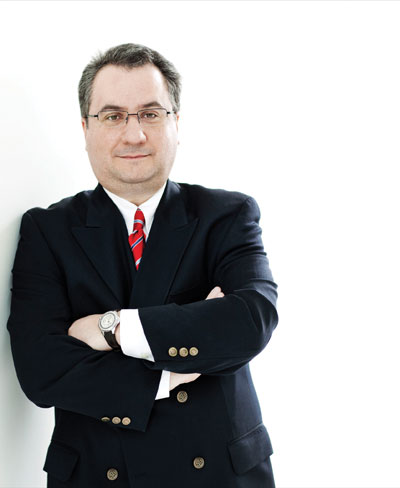
Features
Operations
45º 42′: Arguing and aviation
Tucked away in a building behind Ottawa City Hall, sharing the floor with the Canadian Airports Council and the Tourism Industry Association of Canada (TIAC), is George Petsikas’s office.
March 22, 2012 By Peter Pigott
Tucked away in a building behind Ottawa City Hall, sharing the floor with the Canadian Airports Council and the Tourism Industry Association of Canada (TIAC), is George Petsikas’s office. Grabbing a quick lunch between meetings, the president of the National Airlines Council of Canada (NACC) talked about the advocacy group.
 |
|
| I am able to combine my two interests – which are arguing and aviation – I mean law and aviation! PHOTO: nacc |
A senior director of government and industry affairs at Air Transat, Petsikas trained at McGill University in aviation law. When asked about his job, he laughed: “I am able to combine my two interests – which are arguing and aviation – I mean law and aviation!”
In 2008, the four largest capacity airlines in Canada – Air Canada, Westjet, Air Transat and Jazz – withdrew from the Air Transport Association of Canada (ATAC) to form the NACC. When asked why, Petsikas explained, “The NACC was formed with the strict focus on major airline issues, both domestic and international. ATAC has a very wide-ranging membership that is its strength to a certain point, but also as far as we were concerned, tended to deviate from what we considered to be critical to issues that were front and centre in our work like resource allocation. In the U.S., you have more than one airline association and we felt we could do something similar in Canada strictly devoted to large air carrier issues.”
The NACC’s three pillars are safety, cost competitiveness and environment (sustainability). “This is what we share and work together for – but we are competitors,” he emphasized. “We have strict competition law guidelines not to discuss issues of commercial interest or market development like pricing – that is absolutely taboo. We do, however, share information on areas that are to the benefit of everybody – you don’t want to compete, for example, on safety. On cost competitiveness, we all share an interest with respect to ensuring a regulatory tax infrastructure and cost framework that allows us to keep a cap on costs. This translates into lower fares for our customers. These infrastructure costs are things like airport rents which has been a bugaboo for years, the airport security charge – one of the highest in the world – and fuel excise tax.”
The effects of these lead to the phenomenon that Petsikas called “cross border leakage.” “You have almost five million Canadians who annually make the decision to not travel on Canadian carriers from Canadian airports and would rather go south of the border to Plattsburgh, Bellingham and Buffalo. They say, ‘Hey, this is a better deal and we’ll fly from here.’ Why is that? Well, because those U.S. airports have cheaper operating costs because of the different policies that are applied to them.
Petsikas maintains that the U.S. and other countries view air transport as a major economic engine, as a facilitator of broader economic activity. “And if you have a sound competitive air transport system, you’ve got more productivity, goods going to market faster, cheaper imports, and of course you connect the country to the rest of the world, which is what as the major airlines in Canada we do,” he says. “To that end, we’ve produced a major study, which is on our website www.airlinecouncil.ca and which underlines the impact of the four NACC carriers on the Canadian economy.”
In 2010, the four current member airlines carried in excess of 50 million passengers and directly employed almost 43,000 people. Their total revenues exceeded $17 billion and their total expenditures in Canada were slightly less than $15 billion. Their estimated total economic output impact was $27.4 billion, and they created 113,300 jobs.
“Sound public policy does not tax economic facilitators,” said Petsikas, “such as the air carriers in this country. You do what you can to keep their costs low so that they can produce more. You prime the engine by keeping the cost base low and then the ‘engine’ will produce more travellers, more tourists – tourism is a huge business in Canada.
Petsikas had recently been interviewed in the media with regard to the airlines having to quote full fare, a government regulation that will be effective as of January 2012. “The full fare quote,” he said, “has addressed a number of our concerns. When it was first debated, we wanted to have a level playing field because if we as Canadian carriers were subject to a certain price on a segment and the U.S. or EU competitor wasn’t, then obviously it skews the optics as to whose has the cheaper fare. For the consumer, the cheaper fare isn’t required to include the taxes that are high enough to begin with. The government will be developing the regulatory framework over the next nine to 12 months and the NACC will be front and centre with our input.”
With a president like Petsikas, there is no doubt of that.
Peter Pigott is a Wings writer and columnist.